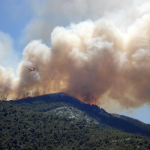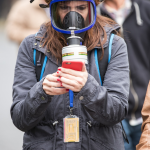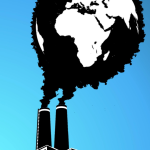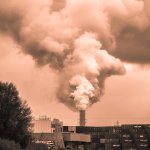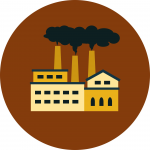We spend 85% of our time indoors, and air conditioning can provide relief when and where we need it. Nevertheless, regulatory agencies continue to press for tighter outdoor emission controls. Their mantra is that lives can be shortened by long-term (years) exposure, no matter how trivial. This is the linear, no-threshold hypothesis currently promulgated by EPA.
Air pollution
Ambient air quality standards have been established by testing animals and evaluating adverse health effects in populations. To maintain ambient concentrations within those standards, emissions are controlled based on statistical relationships with ambient exposures known as dose-response functions (DRFs).
The climate is changing while concerns about air pollution linger on.
Wildfire smoke has been in the news this summer, with horrifying accounts of damage and chaos but little about public health. As a long-time student of environmental health and given the extensive reports of unhealthy air, I wondered why we have not heard about adverse air pollution impacts from these events, especially here in the crowded cities of the Northeast. Google reports no civilian deaths from the Canadian fires and only 1 in California this year.
Clean air has long been recognized as a requisite for mammalian survival. In fact, the National Library of Medicine lists over 8,000 publications citing this, including the terms “air pollution” and “mortality.” How have U.S. mortality rates and life expectancies changed during recent decades of improving ambient air quality?
With the growing concern – especially in the Northeast – about the air pollution now coming from the Canadian forest fires, we thought it would be worthwhile to address the potential health effects, especially the difference between acute and chronic.
Most of the daily air pollution studies on health have focused on statistical significance to establish the existence of the phenomenon, which has already been shown by the Great London Fog of 1952, during which black smoke levels increased about 10-fold, and thousands died over several days. The scientific community would be better served by addressing epidemiological and physiological questions.
In our somewhat academic household, “solving differential equations” was a euphemism for tackling a challenging intellectual problem with an uncertain outcome. Pinning down the health effects of air pollution exposure is one such problem.
Climate change has now largely supplanted COVID as the main source of hand-wringing and angst in the popular press. Carbon is directly involved in climate change through carbon dioxide (CO2) and airborne elemental carbon particles (EC). COVID-19 has an indirect impact as well. Here I add some details to the fray to insert some clarity and reason.
Epidemiological studies have reported statistically significant relationships between long-term air pollution and mortality over the past 50 years, frequently without controlling for smoking. Smoking is perhaps the strongest actionable risk factor in our longevity, and despite dramatic declines, it remains so in modern society. Smoking more than one pack per day can double the risk of all-cause mortality and increase lung cancer risk at least 10-fold.
Why are catalytic converters becoming an endangered species? Because they contain three valuable metals - platinum, palladium, and rhodium - making them worth hundreds, even thousands of dollars, stolen or not. It's the rhodium thieves are after. It's very rare, very expensive and has some strange properties. Could there be a better time for a Dreaded Chemistry Lesson from Hell? I think not.
The World Health Organization (WHO) adopted a dose-response function for PM2.5 that lumps outdoor ambient air quality, second-hand (passive) smoking, and indoor household air pollution. It has been used in 80 published studies of the “Global Burden of Health” (GBD). Here I take a closer look and incorporate some additional risk estimates.
The New York Times reported that the US Environmental Protection Agency (EPA) will reconsider reducing the National Ambient Air Quality Standard (NAAQS) from its current 12 μg/m3 as an annual average. What’s new, and what’s a tired retread?



